A Regression Analysis on Steam Gasification of Polyvinyl Chloride Waste for an Efficient and Environmentally Sustainable Process
- PMID: 37447412
- PMCID: PMC10346700
- DOI: 10.3390/polym15132767
A Regression Analysis on Steam Gasification of Polyvinyl Chloride Waste for an Efficient and Environmentally Sustainable Process
Abstract
Over the last few years, researchers have shown a growing interest in polyvinyl chloride (PVC) gasification and have conducted several studies to evaluate and enhance the process. These studies have recognized that processing parameters have a crucial impact on the assessment of PVC gasification. Despite this, there has been limited exploration of the use of machine learning techniques, particularly regression models, to optimize PVC waste gasification. This study aims to investigate the effectiveness of regression models as machine learning algorithms in predicting the performance of PVC waste gasification. The study uses data collected through a validated thermodynamic model, and three different regression models are tested and compared in detail. Cold gas efficiency and normalized carbon dioxide emission are predicted using linear, quadratic, and quadratic with interaction algorithms. The outcomes for emission algorithms reveal that the linear emission algorithm possesses a high R-square value of 97.49%, which indicates its strong predictive capability. Nevertheless, the quadratic algorithm outperforms it, exhibiting an R-square value of 99.81%. The quadratic algorithm with an interaction term, however, proves to be the best among them all, displaying a perfect R-square value of 99.90%. A similar observation is detected for the cold gas efficiency algorithms. These findings suggest that the quadratic algorithm with an interaction term is superior and has a greater predictive accuracy. This research is expected to provide valuable insight into how regression algorithms can be used to maximize the efficiency of PVC waste gasification and reduce its associated environmental concerns.
Keywords: environmental sustainability; machine learning; plastic gasification; polyvinyl chloride; regression model.
Conflict of interest statement
The authors declare no conflict of interest.
Figures


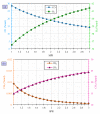
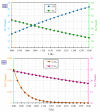
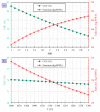
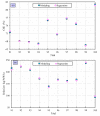

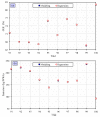
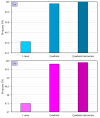
Similar articles
-
Low-emission and energetically efficient co-gasification of coal by incorporating plastic waste: A modeling study.Chemosphere. 2022 Jul;299:134408. doi: 10.1016/j.chemosphere.2022.134408. Epub 2022 Mar 24. Chemosphere. 2022. PMID: 35341769
-
Polyurethane Foam Waste Upcycling into an Efficient and Low Pollutant Gasification Syngas.Polymers (Basel). 2022 Nov 15;14(22):4938. doi: 10.3390/polym14224938. Polymers (Basel). 2022. PMID: 36433065 Free PMC article.
-
Optimizing Hydrogen Production in the Co-Gasification Process: Comparison of Explainable Regression Models Using Shapley Additive Explanations.Entropy (Basel). 2025 Jan 17;27(1):83. doi: 10.3390/e27010083. Entropy (Basel). 2025. PMID: 39851702 Free PMC article.
-
Performance assessment of gasification reactors for sustainable management of municipal solid waste.J Environ Manage. 2021 Aug 1;291:112661. doi: 10.1016/j.jenvman.2021.112661. Epub 2021 May 5. J Environ Manage. 2021. PMID: 33962284 Review.
-
A review of waste-to-hydrogen conversion technologies for solid oxide fuel cell (SOFC) applications: Aspect of gasification process and catalyst development.J Environ Manage. 2023 Mar 1;329:117077. doi: 10.1016/j.jenvman.2022.117077. Epub 2022 Dec 22. J Environ Manage. 2023. PMID: 36565498 Review.
Cited by
-
A New Polymeric Hybrid Auxetic Structure Additively Manufactured by Fused Filament Fabrication 3D Printing: Machine Learning-Based Energy Absorption Prediction and Optimization.Polymers (Basel). 2024 Dec 20;16(24):3565. doi: 10.3390/polym16243565. Polymers (Basel). 2024. PMID: 39771416 Free PMC article.
References
-
- Fang Y.K., Wang H.C., Fang P.H., Liang B., Zheng K., Sun Q., Li X.Q., Zeng R., Wang A.J. Life cycle assessment of integrated bioelectrochemical-constructed wetland system: Environmental sustainability and economic feasibility evaluation. Resour. Conserv. Recycl. 2023;189:106740. doi: 10.1016/j.resconrec.2022.106740. - DOI
-
- Zhao X., Korey M., Li K., Copenhaver K., Tekinalp H., Celik S., Kalaitzidou K., Ruan R., Ragauskas A.J., Ozcan S. Plastic waste upcycling toward a circular economy. Chem. Eng. J. 2022;428:131928. doi: 10.1016/j.cej.2021.131928. - DOI
-
- Xu X., Wang C., Zhou P. GVRP considered oil-gas recovery in refined oil distribution: From an environmental perspective. Int. J. Prod. Econ. 2021;235:108078. doi: 10.1016/j.ijpe.2021.108078. - DOI
LinkOut - more resources
Full Text Sources

